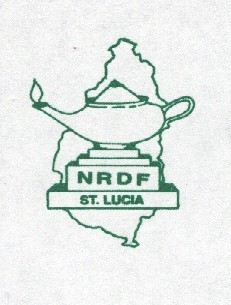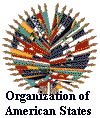Hurricane-resistant Home Improvement in
the OECS
Making low-income housing in the OECS safer and
environmentally sustainable
through property insurance and home retrofit programs.
NRDF Hurricane-resistant Home Improvement Program |
Program Strengthening
|
 
|
Safer Housing for Low-income Earners in the Eastern Caribbean
Throughout the Eastern Caribbean, most families live -- and many
work -- in individual houses. In addition, these houses have become substantial
assets for those families in the region who own their homes, and in
particular for low-income homeowners. With few other resources available to rebuild
or repair houses affected by natural or other hazards, damage to or loss of a
home can leave a family homeless, out of work and in financial peril. In a
hazard-prone and environmentally sensitive region such as the Caribbean, it is
essential to properly account for these factors in the siting and construction
details of a home to ensure the safety of the structure and its occupants and to
minimize the impact of the building and its use on the surrounding environment. Property insurance can
also limit the financial impact of hazard-related damage, however, low-income
residents rarely have access to such insurance.
Hurricane-resistant Home Improvement in St. Lucia
In St. Lucia, the National Research and
Development Foundation (NRDF) offers a hurricane-resistant home improvement program (HRHIP)
for low-income earners. This program trains local builders in safer construction, offers small loans to
families wishing to upgrade their homes and provides the services of a trained
building inspector who approves materials to be purchased, checks minimum
standards. Low-income homeowners who have strengthened their homes through the
HRHIP can obtain property insurance through the program. NRDF established the
HRHIP in 1996, with the assistance of the USAID/OAS Caribbean Disaster Mitigation
Project (CDMP), and has operated it continuously since its inception.
Between 1996 and November 2002, NRDF disbursed 345 loans under
this housing program, with an average loan size of EC$11,000 (approximately
US$4,100). The majority of these loans (68%) were for either extensions to
existing structures or the construction of new structures. The remainder of the
loans was for repairs and renovations, purchases or relocation of homes. While
these loans are considered risky by traditional financial institutions, due to
the level of earnings and lack of collateral on the part of the borrowers,
repayment rates have been strong in the NRDF housing loan program. Over the life
of this loan program, only 5 loans have had to be written off. The number of
rescheduled loans has grown in recent years, however, reflecting the recent poor
economic performance of the country.
In addition to making loan funding available to homeowners who
would otherwise not have access to mortgage funds, the focus of the HRHIP is to
assist low-income homeowners in retrofitting their homes to make them more
resistant to the effects of tropical storms. In support of this objective, the program has
provided training on safer building techniques to builders and artisans who
construct lower income housing and has prepared minimum building standards for
reference by both homeowners and builders. Assistance with drawing up the bill
of materials and with quality control of the construction was originally provided by an estimator
associated with the program and later was provided by the program's loan
officers.
|
Use of the Safer Housing and
Building Standards
Guidance Documents in Home Loan and Construction |
Loan Process
|
Construction Quality Control
|
|
Reference:
Guidelines for the Implementation of a Safer Housing and Retrofit
Program for Low-income Earners
|
Reference:
Minimum Building Standards and Environmental Guidelines
|
|
Interview and loan application phase
|
Environmental Guidelines applied in site
review and site visit
Minimum Building Standards applied in design
review and preparation of construction drawings
|
|
Construction phase
|
Minimum Building Standards and Environmental
Guidelines used as reference during site visits to review
construction quality
|
|
Loan completion phase
|
Minimum Building Standards checklist used to
ensure compliance and for issuance of Certificate of Completion
|
By making homes stronger, these properties become a more
attractive risk to property insurers. Through a local insurance broker, NRDF was
able to establish a group-based insurance program that is available to all
participants in the NRDF HRHIP program. In addition to providing coverage for
damages, group-based insurance programs promote safer housing construction by
requiring the implementation of hurricane-resistant retrofit measures for entry
into the insurance scheme.
St. Lucia HRHIP Review and Strengthening
After seven years of operation, a thorough review of the HRHIP was called for to
update the procedures and revitalize the program. Studies conducted during the
first half of 2003 focused on refinement of loan procedures,
enhancement of the quality control of construction and the development of two guidance
documents, Guidelines for the Implementation of a Safer Housing and Retrofit
Program for Low-income Earners and Minimum Building Standards and
Environmental Guidelines. These guidance documents were developed for
use by NRDF as well as by other institutions in the region that offer or are
interested in offering safer housing assistance to low-income earners.
In
the review of the safer housing program, the hiring of a full-time building
officer was identified as a critical step to strengthening the construction
quality control element of the program. The building officer position will be
responsible for assisting the homeowner with the project plan and material
selection to ensure the incorporation of safer building components; testing the
selected builder for knowledge of safer building techniques; and inspecting the
building during construction and upon completion for compliance with safer
building standards. Initial funding for this position has been identified
through an EU-funded housing program. NRDF added a full-time building
officer to its staff in August 2003.
Assistance for the program review and strengthening was provide
by the OAS, wit funding from the World Bank and the Government of Brazil.
Guidance Documents
Use of these materials: These documents were developed
with funding through the World Bank and copyright for it remains with this
institution. The materials developed under this project are intended for wide
use and distribution. To support wide use, this document may be extracted or
reproduced, as part of safer housing initiatives, provided that appropriate
acknowledgement of the source document and copyright holder is retained.
-
Guidelines for the Implementation of a Safer Housing and
Retrofit Program for Low-income Earners
This document describes an appropriate structure for a Safer Housing and
Retrofit Program, the administration of a revolving loan program for safer housing retrofit and
improvement, minimum standards and construction quality control for home
retrofit and group insurance programs for the low-income earner. The Guidelines
have been prepared based on the experience of the NRDF with the
administration of such a program. This document is
targeted at government institutions and other private sector organizations
in the Eastern Caribbean that are or will be administering
housing programs for the benefit of low-income earners. In the preparation
of the Guidelines, it was presumed that new housing programs that are
developed based on this model will be administered as part of an existing
organization that has some experience with loan programs.
-
Minimum Building Standards and Environmental
Guidelines
This document has been compiled to provide guidelines to local
builders and agencies in St. Lucia involved in safer housing/retrofitting
work, so as to ensure that such work is carried out in the most effective
manner. This document highlights the basic minimum standards for retrofitting
and quality control tips for both new and existing wooden houses and
recommends environmentally sound practices in locating and preparing the house
site, drainage and disposal of wastes. Its purpose
is to inform homeowners of the proper design and construction of safe housing
and to serve as a reference for builders, artisans and inspectors. Inspectors
play an important role, as frequent and informed inspections are necessary to
ensure that structures are being built correctly and safely.
This document is not intended to be a detailed construction manual, but
presents a summary of the recommendations of the writers' experience,
observations and research over the years. It is intended to be used as a
reference/guide for artisans, builders and homeowners in St. Lucia. Specific
solutions are not offered, but the document details a number of options that
the homeowner can use in preparing a site and building a home.
Other Materials
Last Updated 10 September 2003

